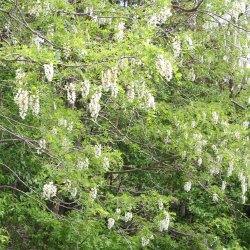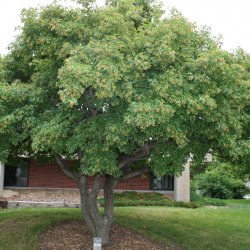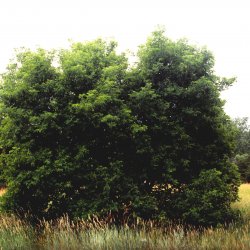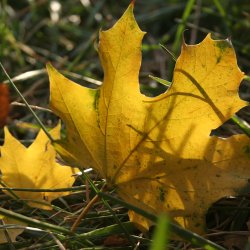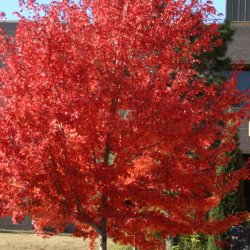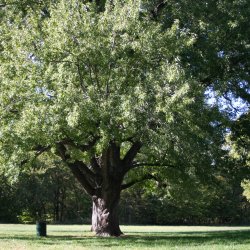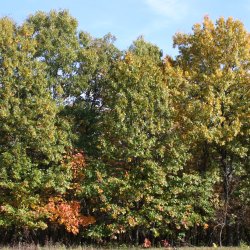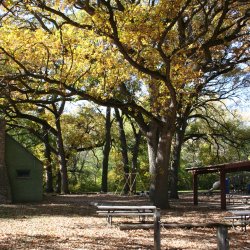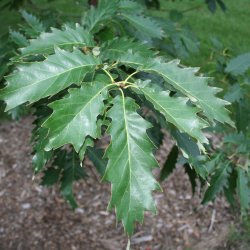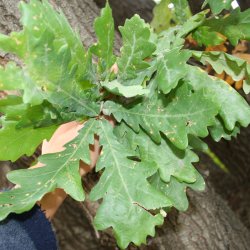Locust, Black Deciduous
Robinia pseudoacacia
Black locust is one of the most adaptable and easy-to-grow trees for the urban landscape. Due to its showy aromatic flower, it has often been planted as an ornamental, but this practice should be discouraged due to the potential for spread by root suckers.
Maple, Amur Deciduous
Acer ginnala
Amur maple is an introduced, deciduous large shrub or small tree. It can be grown as a multi-stemmed clump or trained into a small tree with a single trunk. It can also be sheared into a hedge.
Maple, Boxelder Deciduous
Acer negundo
Boxelder maple is one of the widest occurring trees across North America, extending from Mexico well into Canada and from the east coast of the US to the west coast.
Maple, Norway Deciduous
Acer platanoides
Norway maple is native to central and northern Europe including parts of Norway, indicating its significant cold tolerance.
Maple, Red Deciduous
Acer rubrum
Red maple’s attractive shape, clean habit, and red fall color have made it one of the most commonly planted trees across the eastern United States including eastern Nebraska. The tree has a remarkably wide native range occurring from Minnesota to Newfoundland south to Florida and Texas, and most points in between.
Maple, Sugar Deciduous
Acer saccharum
Sugar maple is one of the most important trees of New England where it is tapped to make maple syrup and is a primary component of that region's beautiful fall color. Though not quite native to Nebraska, sugar maple has proven to be a reliable grower when given good care and favorable site conditions.
Oak, Black Deciduous
Quercus velutina
Native to southeast Nebraska, black oak is similar in shape and form to red oak, the key differences being smaller, darker leaves and a darker, more furrowed bark. This is a great native tree deserving of greater planting!
Oak, Bur Deciduous
Quercus macrocarpa
Bur oak is considered by many to be the king of Great Plains native hardwoods. It is the most common native oak in Nebraska occurring naturally along many rivers and streams in the eastern third of the state and can be found in pockets here and there as far west as Hitchcock and Dawes counties.
Oak, Chinkapin Deciduous
Quercus muehlenbergii
Next to bur oak, chinkapin oak is the second most adaptable white oak that can be grown in Nebraska. It has a wide geographic distribution occurring naturally from Mexico to southern Canada and is native to the southeast part of Nebraska.
Oak, English Deciduous
Quercus robur
As its name implies, English oak is native to England and actually occurs throughout much of Europe extending into western Siberia, attesting to its tough and adaptable nature.
